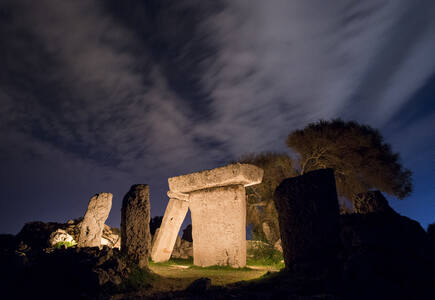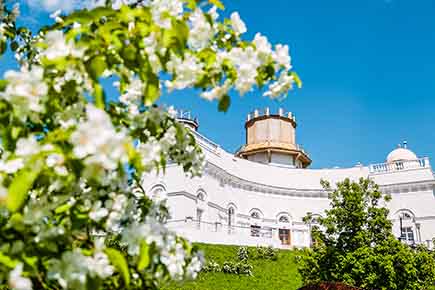2023
Four new astronomically related properties have been inscribed on the World Heritage List at the 45th (2023) session of the World Heritage Committee, held in Riyadh, Saudi Arabia, in September 2023:
Eise Eisinga planetarium, Netherlands
This moving mechanical scale model of the solar system is built into the ceiling and wall of the home of an ordinary citizen—its creator, Eise Eisinga, a Frisian wool-comber. Powered by a single pendulum clock, it provides a realistic image of the positions of the Sun, the Moon, the Earth, and the five planets Mercury, Venus, Mars, Jupiter and Saturn. The planets revolve around the Sun in real time and the distances between the planets are to scale.
Built between 1774 and 1781, and still in its original state, this remarkable orrery represents one of the earliest predecessors of the ceiling and projection planetariums of the 20th and 21st centuries.
Prehistoric sites of Talayotic Menorca, Spain
This serial (multi-site) property includes several taulas, arrangements of two large stone slabs bult into a “T”=shape enclosed within a walled enclosure, and facing its entrance. Constructed during the Bronze Age, these enigmatic monuments have a tightly clustered pattern of orientation around due south, apparently relating to the Southern Cross and other stars in the constellation Centaurus.
Hopewell ceremonial earthworks, Ohio, USA
The custom of mound building was widespread in eastern North America prior to European contact, and the Hopewell assemblage is characterized by enormous enclosures in the shape of circles, squares, and other clear-cut geometrical shapes, generally thought to have been built between about 200 BC and AD 400. A number of these include solstitial alignments: for example, along the diagonal axis of several square earthworks such as Hopeton, Hopewell, and Mound City, all of which are components of the serial property.
Many of the Hopewell earthworks have a fourfold symmetry and are cardinally or solstitially aligned. It has been suggested that circles and squares (or octagons) might themselves represent the earth and sky. When conjoined, as at Newark, they may have represented the whole universe in microcosm, defining spaces in which ceremonies or other activities could be performed that were suited to each realm.
Kazan and Engelhardt astronomical observatories, Russian Federation
Kazan Observatory was built in 1837 while Engelhardt Astronomical Observatory followed in 1898–1901. Its architecture and instrumentation reflects and represents the transition from classical astronomy to modern astrophysics.





